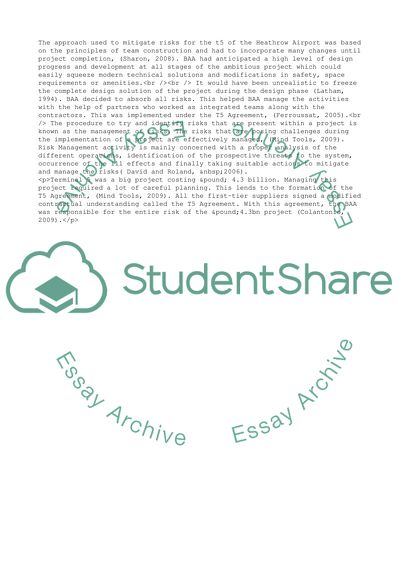Cite this document
(Project Risk Management Case Study Example | Topics and Well Written Essays - 2500 words, n.d.)
Project Risk Management Case Study Example | Topics and Well Written Essays - 2500 words. Retrieved from https://studentshare.org/management/1546217-evaluate-project-risk-management-in-the-construction-of-london-heathrow-airports-terminal-5
Project Risk Management Case Study Example | Topics and Well Written Essays - 2500 words. Retrieved from https://studentshare.org/management/1546217-evaluate-project-risk-management-in-the-construction-of-london-heathrow-airports-terminal-5
(Project Risk Management Case Study Example | Topics and Well Written Essays - 2500 Words)
Project Risk Management Case Study Example | Topics and Well Written Essays - 2500 Words. https://studentshare.org/management/1546217-evaluate-project-risk-management-in-the-construction-of-london-heathrow-airports-terminal-5.
Project Risk Management Case Study Example | Topics and Well Written Essays - 2500 Words. https://studentshare.org/management/1546217-evaluate-project-risk-management-in-the-construction-of-london-heathrow-airports-terminal-5.
“Project Risk Management Case Study Example | Topics and Well Written Essays - 2500 Words”. https://studentshare.org/management/1546217-evaluate-project-risk-management-in-the-construction-of-london-heathrow-airports-terminal-5.


